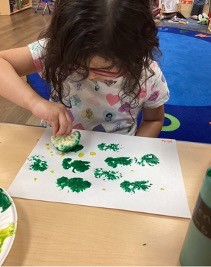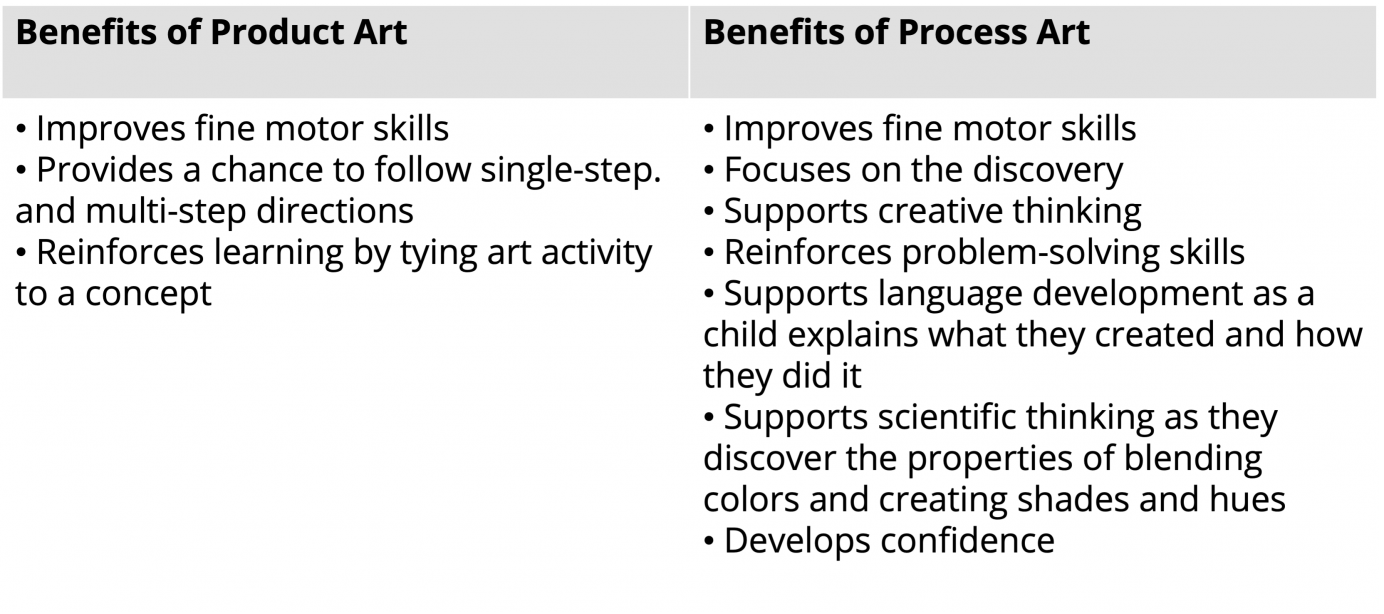
Bella, 4 years old, sits at the kitchen table waiting for her mom to get out the art supplies for the art activity for the day. Her mom brings the gathered supplies to the table and tells her daughter step by step the actions to do in order to create her art for the day. Bella sits and follows along completing each step as is told to her. When she gets done, she looks at her art compared to the example and is happy. She did it right, and it looks similar.
John, 4 years old, sits at the kitchen table working on an art project. Various art supplies are at the table. He had grabbed things that caught his attention to use in the art supplies box. He chooses the color of the paper and the colors of crayons/markers to use. He adds stickers and places them intently in a random, but creative pattern. John is absorbed in what he is doing, ignoring everything else until his masterpiece is done. When he gets done, he looks at his art and smiles a big happy grin. He created something unique, and only he can explain the meaning. He grabs another piece of paper to create another random masterpiece.
The two examples above have kids creating art and loving what they do. The difference is the approach and type of art they are doing. Bella is doing product art while John does process art. Although both are appropriate and engage children in skill development, product art is good for following steps. It does not help children develop their individual creativity. On the other hand, process art is highly creative and is vital to allow children to tap into their higher thinking skills.
At Children’s Lighthouse, our curriculum features many process art activities. Our curriculum development has degreed and experienced early education professionals who understand the importance of developing creativity through open-ended art.
Product art is where an activity is done with the end in mind. The final product is an example that guides the decisions made in order to match the desired outcome. Children follow a set of instructions to get to their end goal. This type of project can be good at reinforcing specific skills. If the project involves a specific skill, product art will require the child to practice that skill to get to the end.
Process art is where there is no end product in mind. It is an open-ended project where children can express themselves in their artwork. There are no steps or directions on how to do it right or wrong. It is simply a discovery of creativity with the child’s mind guiding them on what to do next.


